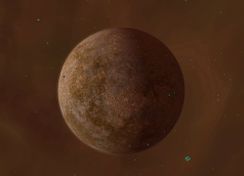
|
This wiki is closed in favour of the new wiki. Information shown is likely to be very out of date. |
Difference between revisions of "Sulza"
From Discovery Wiki
Jump to navigationJump to searchm (category added) |
|||
| (2 intermediate revisions by the same user not shown) | |||
| Line 1: | Line 1: | ||
| − | {{Version|4. | + | {{Version|4.91}} |
{{Planet Infobox | {{Planet Infobox | ||
| − | | name = | + | | name = Sulza |
| − | | image = | + | | image = Sulza.jpg |
| owner = | | owner = | ||
| system = [[Thuringia]] | | system = [[Thuringia]] | ||
| Line 8: | Line 8: | ||
| house = {{House Link | Rheinland}} | | house = {{House Link | Rheinland}} | ||
| population = | | population = | ||
| − | | docking = | + | | docking = No |
| terrain = N/A | | terrain = N/A | ||
| diameter = N/A | | diameter = N/A | ||
| Line 15: | Line 15: | ||
| escape_velocity = N/A | | escape_velocity = N/A | ||
}} | }} | ||
| − | This is a barren dwarf moon with no atmosphere, pockmarked by asteroid impact craters. It is the most massive of [[Planet | + | This is a barren dwarf moon with no atmosphere, pockmarked by asteroid impact craters. It is the most massive of [[Planet Weimar|Weimar's]] moons, which may be due to a large Iron-[[Nickel]] core. Sulza appears to have a solid core, as scans for thermal signatures and surface changes have revealed no evidence of active volcanism. |
| + | |||
[[Category: Rheinland]] | [[Category: Rheinland]] | ||
| + | [[Category: Thuringia]] | ||
Latest revision as of 09:36, 24 February 2019
| Sulza | |
| Location | 6F, Thuringia |
| Technical information | |
| Docking | No |
| Terrain | N/A |
| Diameter | N/A |
| Mass | N/A |
| Temperature | N/A |
| Escape velocity | N/A |
This is a barren dwarf moon with no atmosphere, pockmarked by asteroid impact craters. It is the most massive of Weimar's moons, which may be due to a large Iron-Nickel core. Sulza appears to have a solid core, as scans for thermal signatures and surface changes have revealed no evidence of active volcanism.
